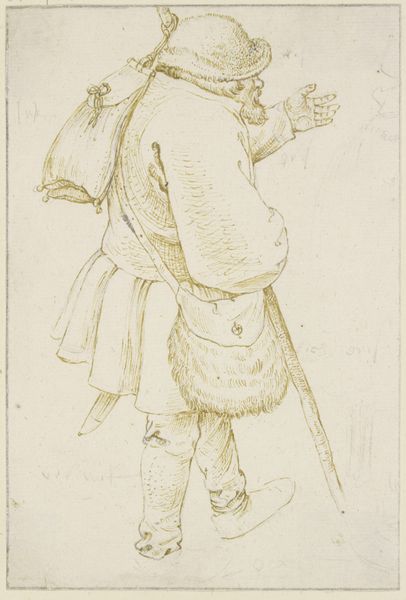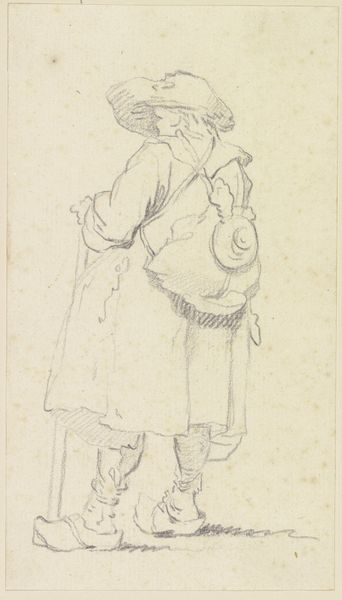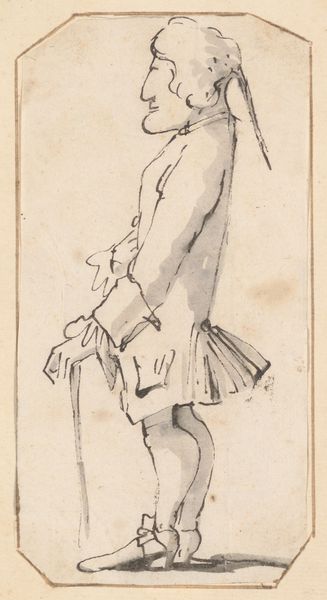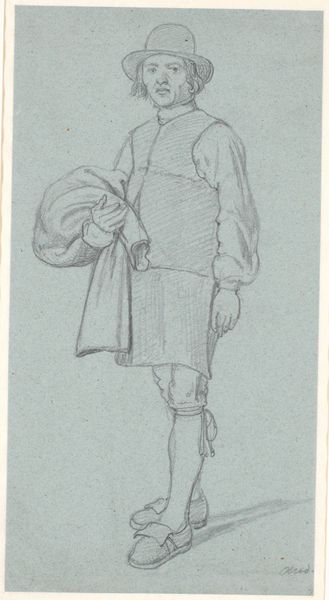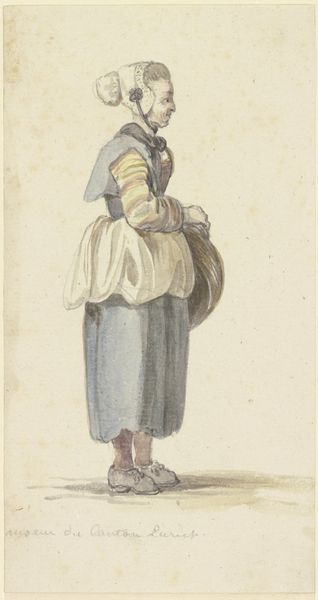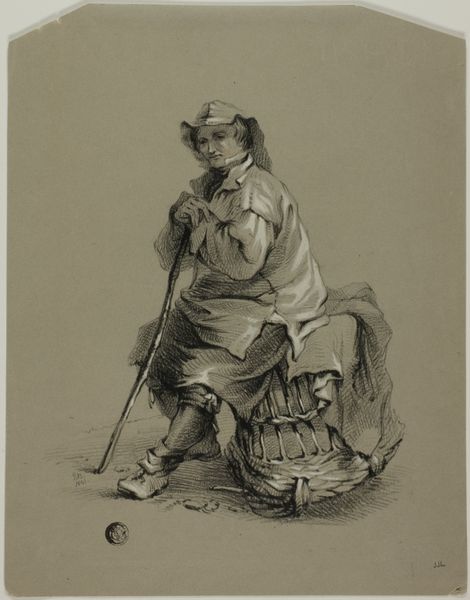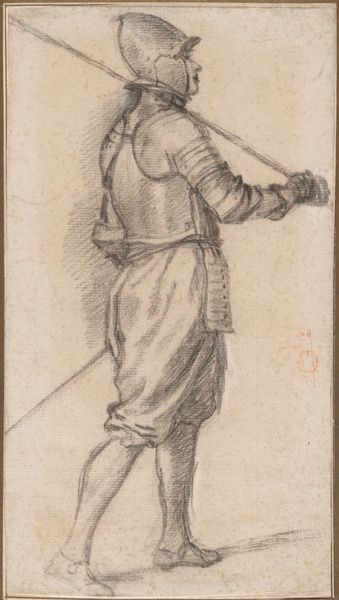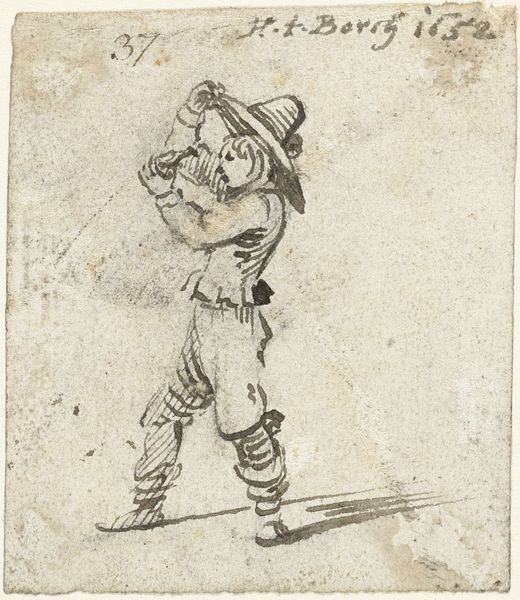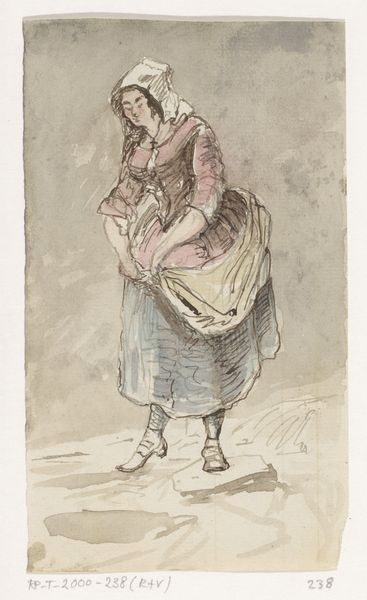
Karikatur, muligvis af professor Münter, gående mod venstre, med hænderne i en muffe 1743 - 1809
0:00
0:00
drawing, pencil
#
portrait
#
drawing
#
neoclacissism
#
caricature
#
pencil sketch
#
pencil
#
portrait drawing
Dimensions: 229 mm (height) x 149 mm (width) (bladmaal)
Curator: Welcome. We're looking at a caricature by Nicolai Abildgaard, probably executed sometime between 1743 and 1809. It's titled "Caricature, possibly of Professor Münter, walking to the left, with his hands in a muff." The piece is a portrait drawing in pencil, currently held at the SMK, the National Gallery of Denmark. Editor: My immediate impression is one of mild bemusement. There’s a distinct visual weight, and the way the subject is walking makes me think of the kind of haughty figures that one finds in Gillray's political cartoons. What’s your sense of it? Curator: Well, considering its potential subject matter – Professor Münter – we might be looking at a satire directed toward the academic establishment of the period. Abildgaard was a prominent figure in the Danish art scene, deeply involved in debates about artistic education and social roles of artists, I’m sure his critiques extended to other professions too. Editor: I see it too; there’s a strong visual vocabulary in this figure, even aside from what is actually depicted. The muff itself is very prominent— suggesting softness or perhaps effeminacy in contrast to the stern professions. Do you know whether muffs carried specific symbolic associations at the time? Curator: Muffs were fashionable items but in a satirical context, yes, it could suggest vanity or a disconnect from more pressing, "masculine" concerns. The period, heavily influenced by Neoclassicism, placed great emphasis on virtue and civic duty, so such apparent foibles would be ripe for lampooning. Editor: The drawing’s medium enhances that impression too. A quick sketch makes it feel casual and spontaneous, suggesting this wasn’t a commissioned, flattering portrait, but something much more immediate, with a slightly irreverent sentiment. Curator: Absolutely. And given Abildgaard’s known political and social critique throughout his life, using the caricature allowed him to really poke fun at the stuffy, possibly corrupt, establishment figures around him. This approach allowed more freedom of expression as caricature at the time occupied lower social role and was treated much less seriously than for instance history painting or portraiture. Editor: It leaves me wondering what Münter himself would have thought. Beyond individual satire, this image, this approach still strikes a familiar chord today—the critique of intellectuals detached from the real world. A timeless theme visualized through simple pencil strokes. Curator: Indeed. Through this relatively simple drawing we see captured so much: a man, the style of an era, a mood, and lasting themes about perception, public role, and social satire in art.
Comments
No comments
Be the first to comment and join the conversation on the ultimate creative platform.
